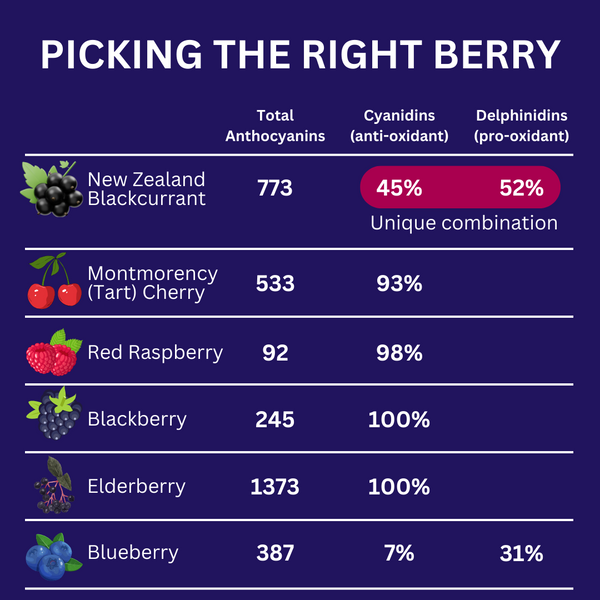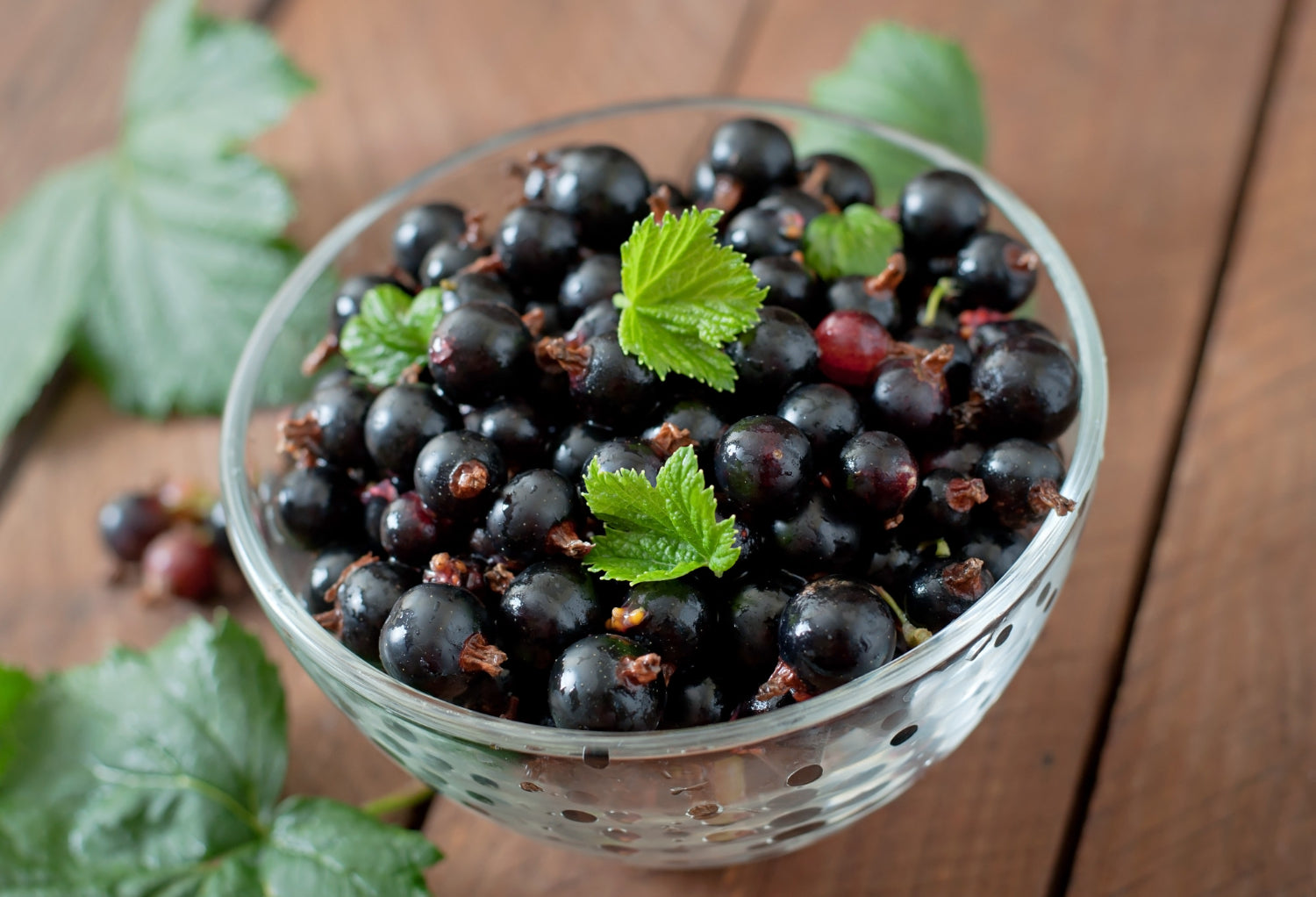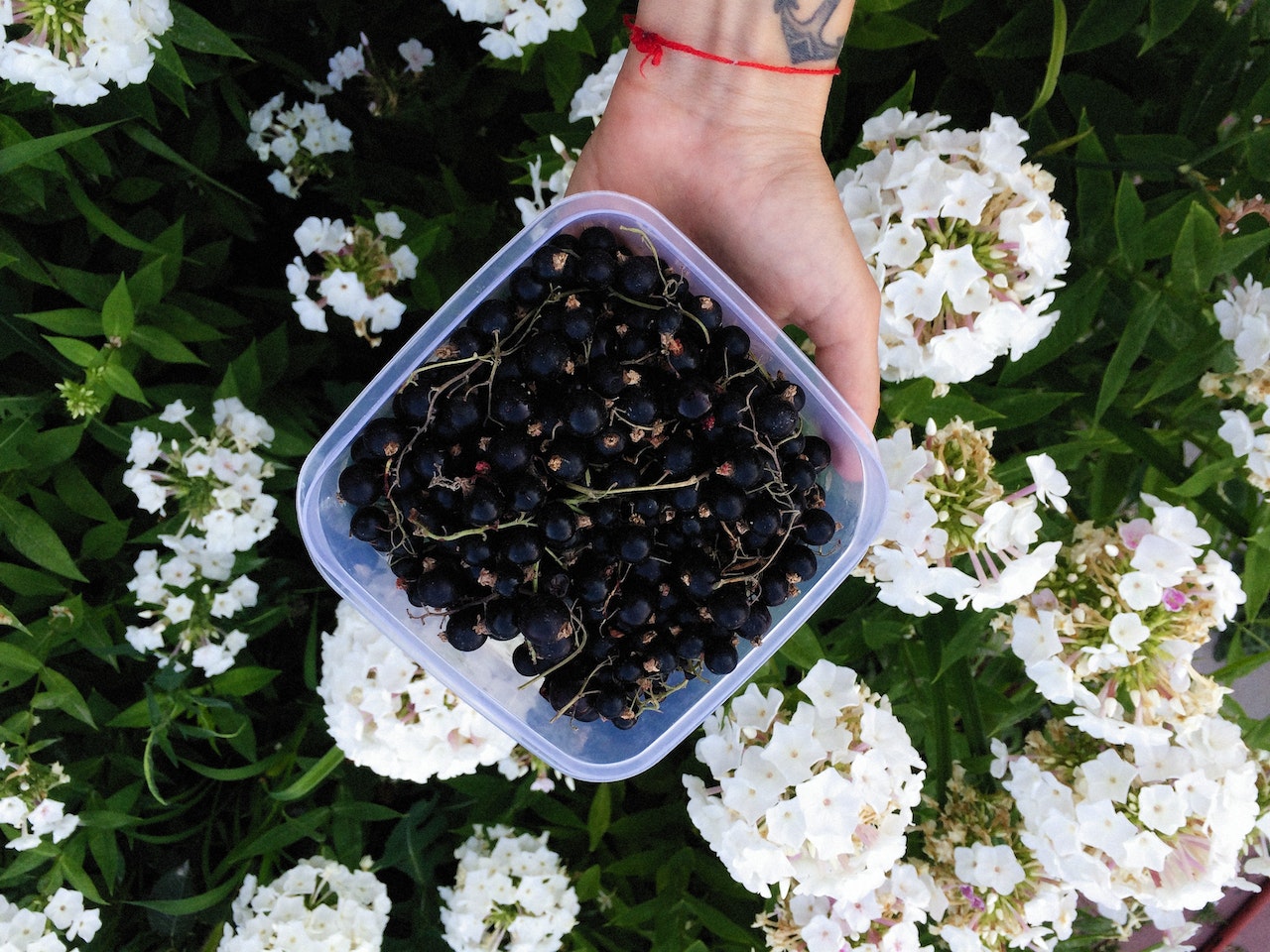New Zealand Blackcurrant berries are one of the most nutritious fruits available - they're a true "super berry".
As you'd expect, science has shown they have a number of health benefits, and researchers are discovering their potential as an athletic pre-workout to promote energy, endurance and recovery as well as much more.
The benefits of New Zealand Blackcurrants come from their environment, resulting from natural growth and cultivation in nutrient-rich soil. Even more importantly, the high UV exposure in New Zealand drives plants to produce the maximum amount of nutrients. Blackcurrants grow well in countries that produce good wine, like New Zealand.
New Zealand Blackcurrant Berries: Three Things You Should Know
-
New Zealand's pristine environment, high UV sunlight levels and rich alluvial soil combine to grow blackcurrants with exceptionally high antioxidant levels.
-
These antioxidants offer numerous health benefits for athletes, including improved recovery and reduced inflammation.
-
New Zealand blackcurrants have a unique anthocyanin profile that optimizes athletic performance, promoting energy, endurance and recovery.
The source of the fruit makes a big difference for blackcurrants.
The source of the fruit makes a big difference for blackcurrants.
This is important because it affects the concentration of antioxidants and flavanoids such as anthocyanins that give blackcurrant berries their unique health benefits and quality. It can also affect the taste and texture of blackcurrants.
New Zealand blackcurrants are at the cutting edge of nutritional science.
The research behind New Zealand blackcurrants put them at the cutting edge of nutritional science.
Studies have shown that dark-colored fruits, especially berries, have high levels of the polyphenol anthocyanin which has been shown to provide health and athletic benefits. The New Zealand blackcurrant has shown especially good results with exercise performance in repeated high-intensity running and cycling time-trial as well as cardiovascular function both at rest and during exercise.
That's because it's not just the level of anthocyanins that's important, it's the combination of different types that makes the difference in performance.
The anthocyanin ratio of two elements in particular - cyanidins and delphinidins - are unique to New Zealand Blackcurrants. Together they switch on the bodies master antioxidant regulator - nrf2. This provides multiple performance and recovery benefits from a single mechanism.
Additionally, blackcurrants have an ORAC value (Oxygen Radical Absorbance Capacity) that is more than double that of red wine and more than 10 times higher than blueberries, and contain many other rich phytonutrients such as phenolic compounds and quercetin.
They also contain vitamin C which helps to boost your immune system and ward off colds!

The key to the health benefits of New Zealand Blackcurrants
The key to the amazing health benefits of New Zealand Blackcurrant berries lies in their environment, as a result of natural growth and cultivation in nutrient-rich soil. The blackcurrant bush grows naturally in New Zealand's far-removed pristine environment, producing high levels of vitamins, minerals and antioxidants including Vitamin C.
Blackcurrants grow well in countries that produce good wine
The fact that blackcurrants grow well in countries known for cultivating good wine is no coincidence. In addition to strong sunlight, New Zealand and other countries with a history of winemaking are rich in alluvial soil, an extremely fertile soil made naturally from a mixture of sand, clay and silt (the sediments transported by rivers). This provides ideal growing conditions for the plants, which are resilient to most diseases and pests.
New Zealand has a high UV Exposure
New Zealand has a high UV exposure due to its geographical location. The country is located in the Southern Hemisphere, and the cleaner air and atmosphere provides less UV protection. This means that UV levels in New Zealand can be up to 40% more than North America.1
UV rays are harsh. High UV levels generate reactive oxygen species (ROS) in plants, a form of oxidative stress that can damage cellular components like DNA, proteins, and lipids. New Zealand blackcurrants activate powerful defense mechanisms that allow them to survive and thrive under these conditions, producing secondary substances that mitigate the UV damage. These include anthocyanins, phenolic compounds, and flavonoids, which serve as natural antioxidants.
All that might sound like a lot of science, but the important thing for athletes is that the work the plant does to protect itself means it produces exceptionally high concentrations of the nutrients that can help performance.
Anthocyanin Boost:
The intense UV exposure in New Zealand stimulates blackcurrants to produce higher levels of anthocyanins—pigments responsible for their deep purple hue. These compounds act as a natural "sunscreen," absorbing harmful UV radiation and protecting the plant’s cellular structures. Studies show that blackcurrants grown in high-UV environments have significantly higher anthocyanin concentrations compared to those grown in regions with lower UV exposure.
Phenolic Compounds:
Phenolics, including quercetin and kaempferol, are also elevated in blackcurrants exposed to strong UV. These antioxidants reduce oxidative damage by neutralizing ROS and repairing cell membranes. This not only enhances the plant's resilience but also increases the fruit’s nutritional profile for consumers.
Nutritional and Health Implications of High UV
Enhanced Antioxidant Capacity:
The adaptive response of New Zealand blackcurrants to UV stress results in berries with exceptionally high antioxidant levels. Anthocyanins, in particular, combat oxidative stress in the human body, promoting cardiovascular health, reducing inflammation, and supporting recovery in athletes.
Immune-Boosting Vitamin C:
New Zealand blackcurrants also show elevated levels of vitamin C, which plays a critical role in reducing oxidative stress and supporting the immune system. UV stress has been linked to an increase in ascorbic acid production as part of the plant’s defense mechanism.
Anti-Inflammatory Properties:
Compounds like anthocyanins and phenolics also exhibit anti-inflammatory properties, which can help athletes manage exercise-induced inflammation and recover faster.

New Zealand Blackcurrants are grown in a far-removed pristine environment.
New Zealand is a long way from the rest of the world, which means our blackcurrants are grown in a pristine environment, far removed from major centers of pollition.
As an isolated country with a temperate climate, New Zealand has an ecosystem that is diverse and rich in resources for growing food. We have some of the strictest controls around biosecurity (what is brought into the country) and genetic modification (GM) in the world. This ensures that whatever is grown here is of the highest quality.
The growing environment of the plants is key.
The growing environment of the plants is key. New Zealand’s alluvial soil types are a perfect home for blackcurrants, and the climate is mild enough to produce fruit all year round. The fertile soil also helps produce an incredibly full-flavoured product!
Blackcurrants are grown in wine country, where grapes and other fruits grow on the same land. The environmental conditions here have a big part to play in how healthy and productive the plants are, which means that NZ Blackcurrants have some of the healthiest roots around!
New Zealand Blackcurrants really are the 'best of the best'.
New Zealand Blackcurrants really are the 'best of the best'. They're grown in a far-removed pristine environment.
New Zealand Blackcurrants have been at the cutting edge of nutritional science for decades now, with research into their many health benefits leading to an explosion in popularity around the world over recent years.
Scientific studies on blackcurrants have shown their potential for improving energy, endurance and recovery times for athletes across a wide range of sports. But the source of the fruit makes a big difference for the health benefits you get from blackcurrants.
So always check the label - if it's not from New Zealand, you'll be compromising on your performance.
References:
McKenzie, R.L., Bodeker, G.E., Scott, G. and Slusser, J., 2006. Geographical differences in erythemally-weighted UV measured at mid-latitude USDA sites. Photochem. Photobiol. Sci., 5(3), 343 - 352.
Willems Mark E. T., Blacker Sam D. Anthocyanin-Rich Supplementation: Emerging Evidence of Strong Potential for Sport and Exercise Nutrition. Frontiers in Nutrition, 9, 2022. https://www.frontiersin.org/articles/10.3389/fnut.2022.864323



